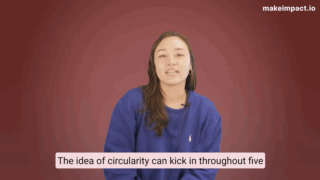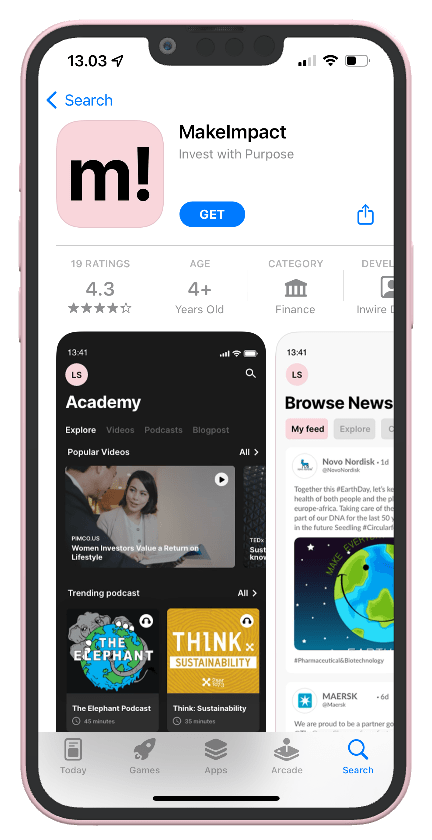Why is cryptocurrency bad for the environment?🪴
You might have heard lots of people talk about Crypto. 📰 If the first thought that comes to your mind is the letters originated in Egypt, we are here to introduce you to what they are really talking about: Cryptocurrency. 💸🏅
How does it actually work? 🤔
The first attempts at alternative electronic currencies started with the beginning of the internet around 1998. 🔙 These early versions of cryptocurrencies failed for various reasons but mainly because the systems were centralized (e.g. run just by the government). 🥴 This could have been avoided if the system had been decentralized. In 2009 – a time when trust in banks was very fragile – Bitcoin was born as the first cryptocurrency, defined by its nature as a decentralized electronic currency. 💻💰
Decentralized means that a network is not controlled by a single entity like just by the government. 🏢 Nowadays, most cryptocurrencies are decentralized and untouchable by governments. They also use a peer-to-peer system. 🤝 This system relies on the control of the payments by the users themselves, also called miners, and by computer algorithms, the blockchain. ⛏🤖
In a nutshell, the blockchain is like a public ledger, a collection of financial accounts. 🏦 The transactions are arranged to be carried out chronologically. 🔃 The blockchain consists of several blocks that each contains a certain number of transactions. These blocks are verified by miners before being added to the blockchain. ⛓☑️ The purpose of these checks is to avoid double-spending. Double-spending means using the same money to pay for two different transactions. 🧾💵 The ledger is public, but user data is encrypted to protect anonymity. 🔒
Thus, the “miners” must solve mathematical calculations, and the first one who succeeds validates the transaction and gets a transaction fee as remuneration. 🔢
What does crypto mining mean for the environment? 🤔
However, all these calculations demand many computers who must be working at all times, and, additionally, use energy-intensive cooling systems to cool the computers. 😔 Generally, these mining computers are grouped together in mining farms. 💻⛏The level of CO2 emissions generated by mining practices depends amongst other things on the source of the electricity. 💥 To be more profitable, miners look for the cheapest electricity. 🥲
For example, during the rainy season in China, where about half of the world’s mining farms are concentrated, there is plenty of cheap electricity from hydroelectric dams. 🌧 In some provinces, it is even sold 30-40% cheaper than the average electricity price. ⚡️ The concentration of miners in this area is, therefore, higher at these rainy times of the year. 📈 In the dry season, when the cost of hydropower rises, miners will switch to coal-fired power, which is cheaper but more environmentally damaging. 😭🤬
Hmm…are there solutions for this? 🤨
Some stakeholders who are conscious of their ecological impact (or who wish to reduce their electricity bills) bet on green energy. 💚🔌
This is the intention of the Moonlight Project in Iceland. 🇮🇸 The idea is to create a huge mining farm that relies solely on renewable energy. 💨☀️ Indeed, Iceland has the advantage of having hydroelectric and geothermal power stations, but also a cold climate, which means that the need for cooling infrastructure is reduced. 🥶❄️
For this reason, several stakeholders have chosen to establish mining farms in Iceland. However, it is estimated that 4.5% of the country’s total energy consumption comes from cryptocurrency mining. 😯 This is equivalent to the electricity consumption of all Icelandic households combined, and the mining farms bring almost no economic or social value to the country, which makes it less attractive for the country. 🥵
Eco-friendly cryptocurrencies? 😁
There are a few eco-friendly cryptocurrencies. Sounds great? 😍 Well, unfortunately, they are not really intended to replace bitcoin and are not yet hugely developed. 🤕 But since it still might be interesting for you to look into them, here are some of the most important ones:
Peercoin uses a system called “proof-of-stake” which avoids the centralization of calculations on a single computer by distributing the calculation among all the users of the currency. 💾 This technique aims to reduce the energy impact that the currency needs for its operation. 📉👍
SolarCoin uses blockchain technology to encourage the production of solar electricity. 🔆🔌
ECO coins are earned through sustainable actions. Eating meat-free meals, switching to a green energy provider, or riding a bike to work can earn you so-called “ECOs” which you can spend in their sustainable marketplace to buy ecological experiences, services, and goods. ♻️🥗🧶 This is a new way to track, measure, and reward sustainability. In other words, you can now do good and get paid for it! 🤩
Also the second biggest cryptocurrency Ethereum just implemented a big update, not only did it reduce transaction fees but it switched from the Proof-of-Stake method to the Proof-of-Work concept, significantly reducing energy consumption by up to 99.5%. 👀
Now the concepts behind cryptocurrencies should not sound cryptic anymore! ✍️ We hope you now have a better understanding and encourage you to read more on this topic. 🤓 But till then – be the movement – makeimpact! ❤️
Disclaimer:
We are not financial advisors, and we do not claim any responsibility for the financial choices you may make on the basis of what you read in this blog. The content of the blog is of an informative nature and has an educational purpose. It is not to be regarded as either investment advice or recommendations, nor do we relate to the reader’s private, financial situation. Any use of information is at your own risk. We encourage you to seek financial guidance if you do not understand the risks in the area. We are not responsible for any choices you may make, based on what you read on the m!Club or from our company page on LinkedIn — MakeImpact.










